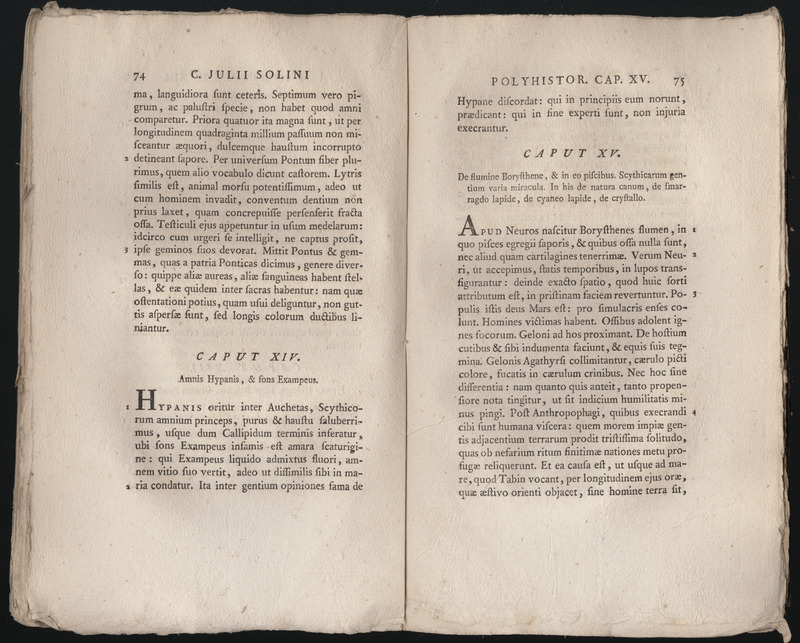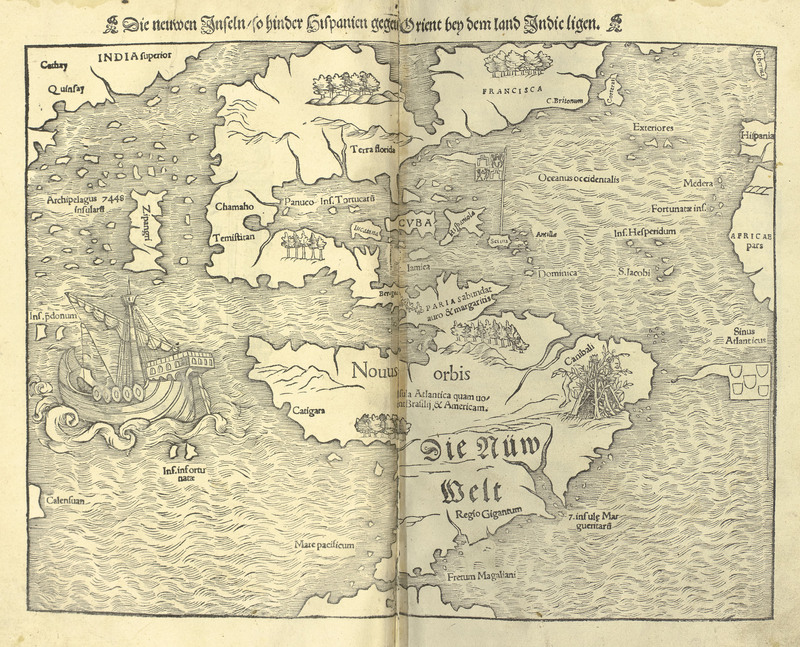Distant Monsters

Monsters played a prominent role in travel narratives and accounts of foreign lands. Such descriptions and illustrations added a sense of exoticism to these places. In turn, the world became a wild place to explore and conquer. In light of the Great Commission, their "monstrous" inhabitants were also a new mission field. With the presence of monsters, Paul's life of missions and adventure was possible for anyone. As such, ancient depictions of monsters set the stage for European Imperialism and Christian evangelism. As we continue an age of space exploration, these same questions and images occupy our thoughts. What and who might we find on the "the final frontier"? Movies about space fill the years around the Moon Landing. Some like Star Wars spoke to the adventure that awaited. Others, such as Alien, considered the threat that space posed for humanity. It is a new land to explore and conquer where monsters fill our imagination. They help maintain that excitement and allure, while also justifying our actions.
Caii Julii Solini, grammatici, Polyhistor: ab ipso editus et recognitus
Gaius Julius Solinus (active 3rd Century)
Strasbourg: From the Typographical Society (1808)
1808 SOLI, pp. 75, 124, 166
Latin geographer, Solinus here gives an early account of the monsters around the world in his 3rd Century Polyhistor. His work paints a world of danger outside Rome's safe borders. Scythia, he says, is occupied by a violent group called the Neuri that transformed into wolves. Satyrs and blemmyae (humanoid beings without heads and a face on their chest) filled Libya. Even further from Rome in India were the cynocephali (dog-headed humans) that could communicated with barking. Anyone who read or heard of these beings in Solinus’ work would know the danger that existed beyond Rome, and the protection its army offered them.
Of the Citie of God: with the Learned Comments of Io. Lodovicus Vives
Augustine of Hippo (354-430)
London: Printed by G. Eld and M. Flesher (1620)
1620 AUGU, pp. 548–549
After Pentecost, Jesus' disciples spread the gospel in foreign lands that supposedly held monsters. Tradition speaks of Thomas traveling through Parthia and on to India. Likewise, Andrew traveled throughout Scythia. These missions raised questions about whether monsters were part of the plan for salvation. Today, it would be like asking what the discovery of aliens means for the Great Commission. In this passage, Augustine addresses the humanity of some monstrous beings. He argues that any mortal being with rationality is human. This definition cuts past questions of physical difference in a way that considers monsters as humans and children of Adam. Thus, they also need and can receive salvation.
“Calling something exotic emphasizes its distance from the reader. We don’t refer to things as exotic if we think of them as ordinary. We call something exotic if it’s so different that we see no way to emulate it or understand how it came to be. We call someone exotic if we aren’t especially interested in viewing them as people.”
N. K. Jemisin ("The Unexotic Exotic")
Cosmographei, oder, beschreibung aller länder, herrschaften, fürnemsten stetten, geschichten, gebreüchen, hantierungen, etc.
Sebastian Münster (1489-1552)
Basel: Henrich Petri (1550)
1550 MUNS, pp. 1165, 1182, 1183
These images come from Sebastian Münster's 1550 Cosmographei. This book sought to give an account of the world and its inhabitants. In it we see the contrasts between how he imagined Europe and the rest of the world. For Europe, he describes the great cities and their storied history. When describing India and Africa, his focus is on the monstrous beings found there. For instance, we see here the illustrations of blemmyae and cynocephali found in these regions. He imagines similar beings in the recently discovered New World, of which he includes a map. As a whole, his work demonstrates the easy associations between foreign monsters and Imperialism.
- Exhibition Home >
- Introduction >
- Depicting Monsters >
- Monsters as Allegory >
- Monsters as Portents of the Future >
- Distant Monsters >
- Our Neighbors as Hidden Monsters >
- Bibliography >









